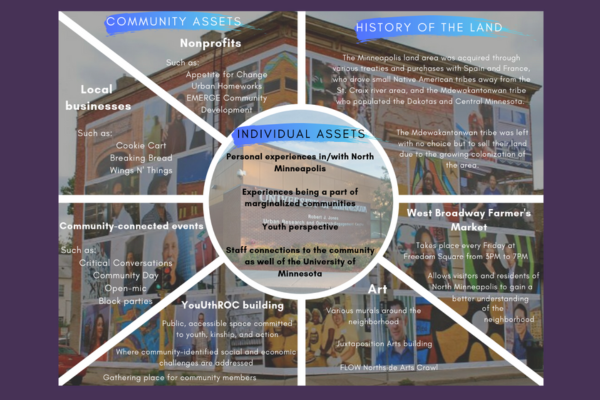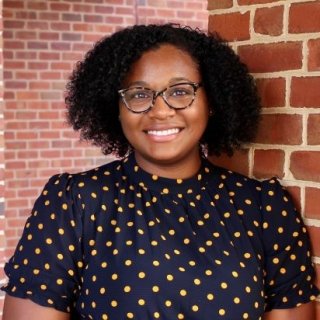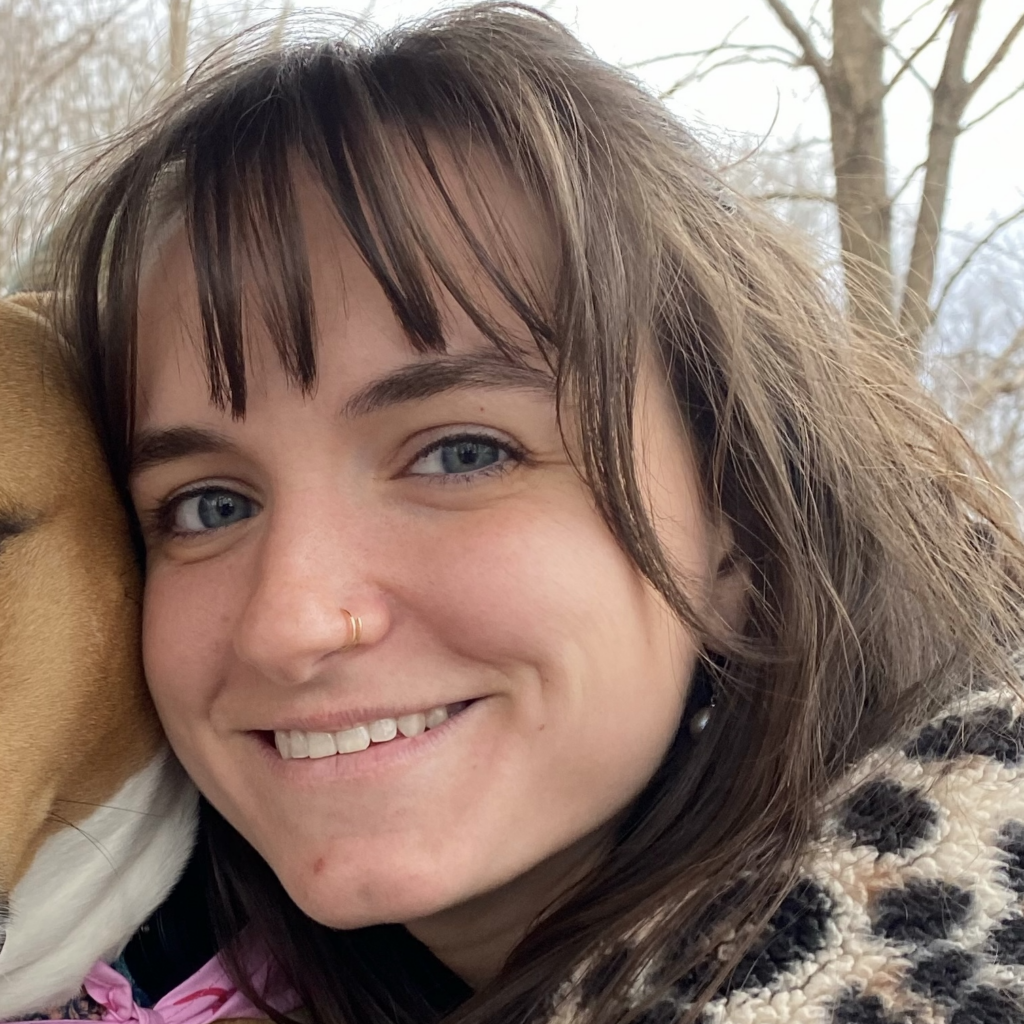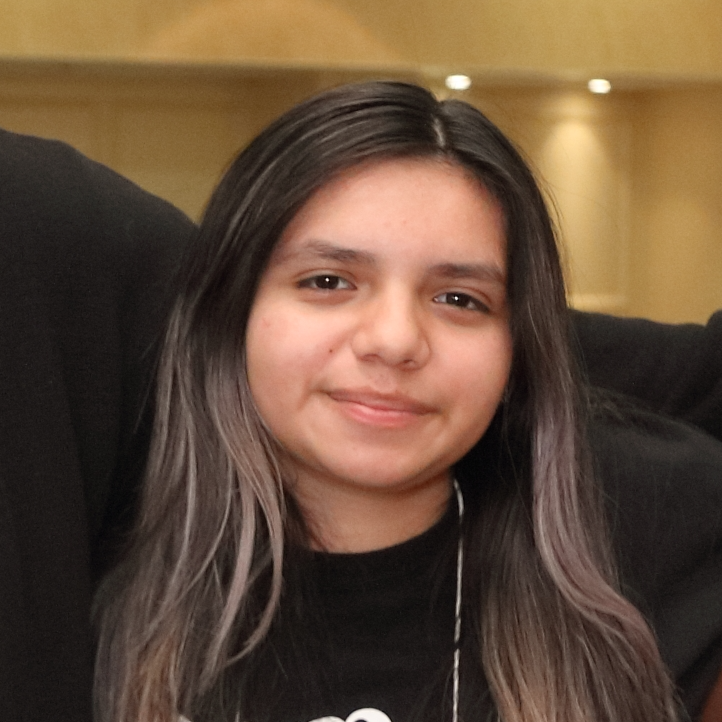By: Jessica Forrester
This post is the 7th publication in a YPAR series, which aims to explain participatory research, youth-led measurement and evaluation approaches, and strategies for youth-adult collaborations in YPAR.
Highlights:
- In this series on Youth Participatory Action Research (or YPAR), we have started to share tips & strategies for facilitators.
- Some YPAR facilitators use two types of modeling activities in their research projects, community asset & power mapping.
- This blog includes explanations of these mapping exercises, reflections on the iterative nature of creating maps, and downloadable examples to use in future work.

Interactive activities are central to Youth Participatory Action Research (YPAR). These activities encourage youth to think critically about their communities and provide opportunities to strengthen problem-solving skills. Exercise examples include community asset mapping and power mapping. Below I’ll describe these two maps, when to include them in your YPAR process, and steps your team can follow for your research project. Additionally, there are templates and examples to support future YPAR projects.
Community Asset Mapping
Community asset mapping is an action-oriented process that documents often unexplored resources within a defined community. Assets are valuable resources for communities to maintain their well-being. These resources include individuals, land and physical environments, culture, stories, businesses, and citizens’ associations.
In other words, community asset mapping visualizes a community as inherently full of social and physical resources rather than defined by deficits that need remediation.
Asset mapping is a data collection step that can support a YPAR project after you’ve decided on your research goals or as a stand-alone project to document resources and build collaborative relationships. Regardless of your route, community asset maps are a powerful tool to understand the context of research projects and envision how resources already occurring in a community can be used to create change. Additionally, taking the time to find out what is already happening in a community will avoid duplicating services or solutions that others have done.
Here are some steps to create your own community asset map:
- Identify where and who makes up the community that you want to explore. Are you or your youth interested in your neighborhood, school, or entire city?
- Determine what kind of assets you want to know about and how you’ll find out about those assets. For example, youth can interview community members about their positive experiences in the community or read newspapers to find out about groups organizing local events.
- Logically organize the community asset map to share, use, and maintain.
Templates & Examples of Assets Maps
UC Berkeley’s YPAR Hub created an activity to guide YPAR teams in defining what community means and identifying the resources within a community.
YoUthROC (a community and University-connected youth research team that supports the growth of YPAR) created asset maps for their magazine to highlight their research finding surrounding nourishing youth assets and agency.
Power Mapping
Power mapping is a visual representation that organizes people and organizations based on how much a person/group supports your project and how much power a person/group has to help your project progress. Completing this visual exercise will help YPAR teams understand how power operates within your community.
In addition, power mapping can help YPAR teams strategize about stakeholders who strongly support their research goals, opposers who might hinder their project, and people/groups in the middle who could be influenced to assist.
You can incorporate power maps into various steps of your research process. For example, a) during the early brainstorming stage as youth think about the proposed audience of the project, b) when they finish the project and are preparing to present the findings, or c) when they create an action plan and are contemplating who can help them make positive change. Regardless of which step, power maps can help youth and your team create a framework for success to meet the research, action, and relationship-building goals.
Here are some steps to create a power map:
- Brainstorm a list of people/groups in your community who make decisions on the YPAR topic. This list can include those responsible for creating the problem you want to change, those who may want to fix the problem, those already working to fix the problem, and your YPAR team.
- Place each person/group on the power map template based on their level of support and power (see the Power Mapping Activity below for the template). Questions you can ask yourself are: Do they agree or disagree with the goals of our YPAR project? How much power do they have over decision-making? You can do this virtually (via Jamboard or Google Slides) or in person with a whiteboard and sticky notes.
- Reflect on how people/groups are organized on the map and determine the next steps. Future actions can include engaging with your influential supporters or limiting the impact of powerful non-supporters.
Templates & Examples of Power Maps
A guide created by Community Futures, Community Lore (UC Davis) to assist YPAR teams in thinking strategically about supporters and detractors while you focus on your action efforts.
On the second slide of the Instagram post, YoUthROC completed a power map with local partners during their Research to Social Action workshop series.
Reflections on Mapping
Asset maps are just the beginning. Typically in community mapping exercises, assets are listed with short descriptions for brevity. In actuality, each asset could be further broken down and described. Youth and research teams can work towards transcending from maps to more detailed inventories that document individuals’ self-identified skills, partnerships between institutions and community groups, and strategies to identify additional resources. These steps would give a more well-rounded view of community assets and allow researchers to be more knowledgeable on community values, issues, and organizing efforts before proposing community-engaged projects.
Maps should be re-visited. An essential step in creating asset or power maps is to re-visit and update them. These tools are not final, and the continuation of participatory research depends on continually revising community resources. For example, organization leaders change regularly. It may be worthwhile to update the asset map depending on the new leader’s values or update your power map to reflect their level of support and possible allyship.
Missed a post in the YPAR series? Check out all the tips and resources:
- The Benefits of Engaging in Participatory Approaches to Research
- Why Young Investigators Are Important
- Youth Voices in YPAR (includes youth)
- Strategies for the YPAR Collaboration Process (includes downloadable resources)
- How Can Youth Voice Amplify Research? Listening & Leadership Are Key
- 4 Universal Facilitation Tips for YPAR Collaboration
- Asset & Power Mapping as Tools for Youth-Led Research (includes downloadable resources)
- Why YPAR Matters: Youth Are “Looking at the World Differently” (includes youth)
If you have any comments or questions about this post, please email Youth-Nex@virginia.edu. Please visit the Youth-Nex Homepage for up to date information about the work happening at the center.

Author Bio: Dr. Jessica Forrester is a postdoctoral researcher working directly with Youth-Nex and the Youth Action Lab. Before joining the University of Virginia, Jessica earned a Ph.D. in STEM Education from the University of Minnesota and a bachelor’s and master’s degree in biomedical engineering. Her dissertation combined her interest in STEM engagement with justice-oriented practices in education to create mathematics activities for an after-school tutoring program in North Minneapolis. Specifically, qualitative and community-based approaches were utilized to acknowledge community assets and, in turn, value those assets during mathematical learning to influence students’ identity development, skills development, criticality, and joy. Additionally, Jessica explores equity and justice through youth participatory action research and mentoring networks.



